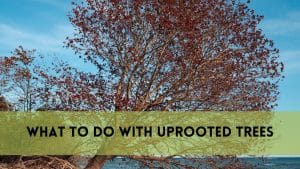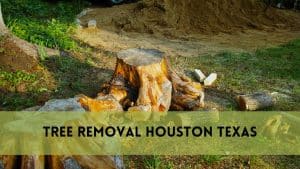A great way to improve the ecology and appearance of your surroundings is by planting trees. The question of whether it’s possible to plant a new tree in the same location may arise if you recently removed a tree stump from your yard. In this post, we’ll look into the exciting subject of whether you may plant a tree where a stump was removed, as well as the difficulties and factors to take into account.
Tools Required for Plant a Tree Where a Stump Was Removed
Shovel: A strong shovel is necessary to dig a hole large enough to accommodate the root ball of the new tree. To efficiently dig up soil, make sure it is sharp and in good condition.
A mattock or pickaxe: can be used to loosen up compacted soil and clear away any residual stump debris, including roots and wood fragments.
A soil test kit: It Can be used to evaluate the pH levels and quality of the soil and will provide you with important information about whether you need to amend the soil with particular nutrients or organic matter.
Compost or Organic Matter: You might need to add compost, well-rotted manure, or other organic matter to enhance soil structure and fertility, depending on the results of the soil test.
Tape Measure: A tape measure is used for taking accurate measures to ensure that the planting hole is dug to the proper depth and width.
Watering can or garden hose: Proper watering is essential for a newly planted tree’s survival. You can supply continuous moisture during the crucial establishment period with a garden hose or watering can.
Tree Sapling: Pick a wholesome tree sapling that is suited to the soil and environment where you live. Think carefully about the kind of tree you want to plant, then get it from a trustworthy nursery.
Stakes and Tree Ties: You may need stakes and tree ties to support the young tree and shield it from high winds. Make sure the materials are strong yet kind to the tree’s barks
Influence of the Stump on Soil: Understanding how the old stump affects the soil is crucial before discussing whether planting a new tree is feasible. The soil’s composition may be altered by stumps, which makes it less suited for fresh plantings.
Decomposing Procedure: It takes a long time for stumps to organically decay. They may be able to suck nutrients from the soil during this time, perhaps producing an environment unfit for growing new trees.
Plant a Tree Where a Stump Was Removed
You can plant a tree where a stump was removed, but there are some important considerations to keep in mind:
Stump Removal and Preparing the Site:
Before you can begin planting a new tree, it’s essential to completely remove the old stump. Stumps left in the ground can hinder the growth of new roots and compete for nutrients and water. The methods for stump removal include:
- Stump Grinding: This involves using a stump grinder to break down the stump into wood chips. The remaining wood chips can be used as mulch for the new tree.
- Excavation: In some cases, you may need to excavate the stump and its root system entirely. This can be labor-intensive but ensures that no remnants of the old stump remain.
- Chemical Treatments: Another option is to apply chemical stump removers to speed up decomposition. This method takes more time but can be less physically demanding.
Soil Preparation:
The soil in the area where the stump was removed might be compacted or depleted of nutrients. Proper soil preparation is crucial for the health of the new tree. Here’s how to go about it:
- Loosening Soil: Use a rototiller or shovel to loosen the soil in the planting area. This helps improve aeration and root penetration.
- Adding Organic Matter: Incorporate organic matter such as compost, well-rotted manure, or topsoil into the soil. This improves fertility and provides a better growing medium for the tree.
- Testing pH Levels: Consider conducting a soil test to determine the pH level and nutrient content. Based on the results, you can make necessary adjustments by adding lime or sulfur to achieve the optimal pH range for your chosen tree species.
Selecting the Right Tree:
The success of your tree planting project depends on choosing a tree species that is well-suited to the local climate, soil conditions, and the available space. Consider the following factors:
- Climate Compatibility: Ensure the tree species is adapted to your region’s climate, including temperature extremes and rainfall patterns.
- Mature Size: Choose a tree that fits the available space once it reaches maturity. Avoid planting trees that will eventually outgrow their surroundings.
- Purpose of Planting: Determine the primary purpose of planting the tree, whether it’s for shade, aesthetics, wildlife habitat, or other reasons. This will help you select a suitable species.
Planting Properly:
Planting a tree correctly is crucial for its long-term health and growth:
- Dig the Right Hole: The size of the planting hole should be sufficient to accommodate the tree’s root ball comfortably.
- Plant at the Correct Depth: Ensure the tree is planted at the same depth it was in the nursery container or burlap ball. Planting too deep or too shallow can harm the tree.
- Amend Soil: Backfill the hole with the amended soil, gently packing it to remove air pockets around the roots.
- Water Thoroughly: After planting, water the tree thoroughly to settle the soil and provide initial moisture to the roots.
Mulching:
Apply a layer of mulch around the base of the tree, extending out to the drip line (the area under the tree’s canopy). Mulch helps in several ways:
- Moisture Retention: It conserves soil moisture by reducing evaporation.
- Weed Suppression: Mulch helps prevent weed competition, which can be detrimental to young trees.
- Soil Temperature Regulation: Mulch helps regulate soil temperature, preventing extreme fluctuations.
Ensure that the mulch is not piled up against the tree trunk, as this can cause rot.
Watering and Maintenance:
Newly planted trees need consistent watering, especially during their first year or two. Water deeply but infrequently to encourage deep root growth. Monitor the tree’s health, and prune as necessary to remove dead or damaged branches and promote proper development.
Patience:
Growing a tree takes time. It may be several years before the new tree reaches maturity and provides significant benefits. Be patient and continue to care for your tree as it grows.
Safety Precautions
- Protective Gear: Put safety first by wearing the proper equipment, such as safety glasses, gloves, and a hard hat, to guard against potential dangers.
- Wear strong, slip-resistant footwear to keep your balance on rough terrain and shield your feet from projectiles.
- Wear ear protection to protect your hearing when using loud tools to remove stumps, such as a chainsaw or grinder.
- Tools should always be handled carefully to prevent accidental accidents, and they should be kept in good operating order at all times.
- stay Hydrated: To prevent heat-related illnesses, be well hydrated during the process, especially in hot weather.
FAQS
Can you plant a new tree in the same spot after stump removal?
Yes, it’s possible to plant a new tree in the same location where a stump was removed. However, certain precautions and preparations are necessary to ensure the new tree’s success.
Do I need to remove all of the old stump’s roots before planting a new tree?
It’s advisable to remove as many old stump roots as possible to prevent competition for nutrients and space. Ensure that the new tree’s roots have room to grow.
How long should I wait after stump removal before planting a new tree?
It’s best to wait at least a few months after stump removal to allow the soil to settle and any residual decay to occur. This will create a more favorable environment for the new tree.
What type of tree is suitable for planting in a location where a stump was removed?
Choose a tree species that is well-suited to the local climate and soil conditions. Consider the space available and any potential issues with previous tree growth in the area.
Do I need to amend the soil before planting a new tree?
soil amendment may be necessary to improve soil quality and fertility. Conduct a soil test to determine the specific needs of the new tree and follow any recommendations for soil improvement.
Conclusion
It is not only possible but also rewarding to plant a tree in a spot where a stump has been removed. You may establish a setting that supports healthy growth by dealing with the issues presented by stump remains, soil preparation, and cautious tree selection. Beyond aesthetics, the advantages include improvements to the environment, higher property values, erosion management, and the establishment of wildlife habitat.
With careful attention and maintenance, your freshly planted tree can flourish and grow, enhancing the beauty of the area and leaving a lasting legacy for future generations. Don’t be afraid to start on this environmentally friendly adventure and revitalize your landscape.





